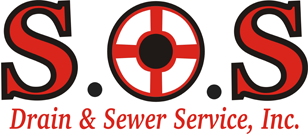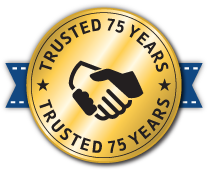Sewer lines are an essential part of our plumbing systems, responsible for carrying waste and water away from our homes. However, like any other system, sewer lines require maintenance to ensure they function properly. Ignoring signs that your sewer line needs cleaning can result in significant damage and costly repairs.
In this article, we will discuss the common signs that indicate your sewer line needs cleaning. We will also provide tips on how to prevent clogged sewer lines and maintain a healthy plumbing system.
So whether you’re a homeowner or a renter, it’s crucial to know the warning signs of a clogged sewer line. By being aware of these signs, you can take immediate action before the issue escalates into a major problem.
Why Does My Sewer Line Get Clogged?
Before diving into the signs of a clogged sewer line, it’s essential to understand how and why this issue occurs. Over time, debris such as food particles, hair, grease, soap scum, and other foreign objects can accumulate in your pipes and create blockages. Additionally, tree roots can grow into sewer lines and cause obstructions.
It’s also important to note that older homes may have outdated sewer lines made from materials like clay or cast iron, which are more susceptible to clogs compared to newer PVC pipes.
Fortunately, there are ways to prevent clogs and keep your sewer line clean. Regular maintenance such as snaking or hydro jetting can help remove buildup and keep your pipes flowing smoothly.
Signs Your Sewer Line Needs Cleaning
There are several red flags that could indicate your sewer line needs cleaning. Here are some of the most common signs to look out for:
Slow Draining Sinks, Showers, and Tubs
When you notice that your sinks, showers, or tubs are draining slower than usual, it could be a sign of a clog in your sewer line.
This slowdown is often due to a buildup of debris, such as hair, soap scum, or grease, that gradually restricts the flow of water. If only one fixture is affected, the problem might be localized; however, if multiple drains run slowly, it is likely tied to a more significant blockage in the sewer line.
Addressing this issue promptly can prevent further complications and help maintain the efficiency of your plumbing system.
Multiple Clogged Drains
Having multiple drains clogged at the same time is a telltale sign that your sewer line may need cleaning.
This scenario suggests that the obstruction is not limited to a single drain but exists within the main sewer line itself, affecting the entire plumbing system. Various factors can lead to these blockages, including a buildup of household debris or infiltrating tree roots.
Ignoring these signs can lead to more severe problems, such as pipe damage or sewer backups. Timely cleaning and maintenance can restore normal drainage and prevent costly repairs down the line.
Gurgling Sounds from the Toilet
Gurgling noises emanating from your toilet can be an indication of air being trapped in the sewer line, often due to a blockage. These disturbances in water flow create pressure imbalances, which manifest as strange sounds.
This situation might occur when flushing the toilet or using other plumbing fixtures. Such noises should not be ignored, as they can signify that a more substantial clog is developing.
To prevent further complications, it is advisable to address the issue promptly by consulting a professional drain cleaner, who can assess the condition of your sewer line and perform the necessary cleaning.
Foul Odor Coming from Drains or Sewer Line
Unpleasant smells emanating from your drains or sewer line often indicate a blockage or buildup in the system.
As organic materials decompose within your pipes, they release gases that can seep into your home, creating foul odors. These smells not only affect indoor air quality but can also signify a more severe sanitation problem.
Addressing odor issues quickly can prevent them from escalating into major clogs or even sewage backups. Regular cleaning and maintenance, including professional inspections, can help identify and resolve potential issues before they become larger, more disruptive problems.
Sewage Backup in Toilets or Tubs
One of the most alarming signs of a sewer line problem is sewage backing up into your toilets or tubs. This situation occurs when there is a severe blockage in the sewer line, preventing wastewater from flowing away from your home and causing it to return through the plumbing fixtures.
Such backups pose health risks and demand immediate attention. They can result from a variety of factors, including tree root infiltration, collapsed pipes, or significant debris buildup. Prompt action is essential to mitigate potential damage and restore safe, sanitary conditions in your home.
So these are some of the warning signs that your sewer line needs cleaning. By being aware of these indicators and taking timely action, you can maintain a healthy plumbing system and prevent costly repairs.
How To Prevent Clogged Sewer Lines
As they say, prevention is always better than cure. Here are a few tips to help prevent clogs in your sewer line:
Dispose of Food Waste Properly
Properly disposing of food waste is essential to prevent sewer line clogs. Avoid letting large chunks of food or fibrous material go down the drain.
Instead, use a garbage disposal for small scraps or compost organic remnants for a more sustainable option. This mitigation technique prevents obstructions in your pipes, reducing the chance of blockages.
Ensure to scrape your plates into the trash or compost before washing to maintain a clear, efficient plumbing system throughout your home.
Avoid Pouring Grease and Oil Down Drains
Prevent sewer line clogs by avoiding pouring grease and oil down the drains. When these substances cool, they harden, adhering to pipes and creating blockages that restrict water flow.
Instead of using your sink, collect grease and oil in a disposable container, then throw it away once solidified. By adopting this practice, you can preserve your plumbing’s integrity, ensuring smooth and consistent drainage and reducing the risk of more extensive, costly repairs.
Use Hair Catchers in Showers and Tubs
Using hair catchers in showers and tubs is an effective way to prevent clogs in your sewer lines. These affordable devices capture hair and other debris before they enter your plumbing system, reducing potential blockages.
Regularly clean the hair catchers to maintain their efficiency and prevent water buildup in your fixtures. By integrating this simple solution into your routine, you can protect your plumbing system and ensure that your drains function smoothly and efficiently.
Regularly Clean Your Plumbing Fixtures
Regularly cleaning your plumbing fixtures is crucial in preventing clogs from forming in your sewer line. This maintenance involves using appropriate tools like brushes or snakes to remove accumulated gunk, such as soap scum or mineral deposits, that can obstruct the water flow.
Routine cleaning ensures an unimpeded drainage system and can extend the lifespan of your pipes. Making regular cleaning a priority helps to maintain sanitation and prevent inconvenient, costly plumbing issues.
Schedule Professional Maintenance and Inspections
Scheduling professional maintenance and inspections regularly helps in preventing sewer line clogs. Professionals can identify potential issues using advanced equipment and techniques that might not be visible to the untrained eye.
These experts can perform thorough cleaning methods like hydro jetting to remove stubborn buildup inside your pipes.
By incorporating professional assessments into your schedule, you can preserve your plumbing’s efficiency, anticipate potential problems, and avoid significant repairs or replacements in the future.
These preventative measures can help maintain a healthy sewer line and plumbing system, ensuring your home’s comfort and safety. By being proactive in caring for your pipes and drains, you can prevent unpleasant clogs and ensure efficient water flow throughout your home. So be mindful of these tips to avoid any potential sewer line issues.
How Often Should I Have My Sewer Line Inspected?
The frequency of sewer line inspections depends on several factors, including the age and condition of your system, as well as any previous issues. Generally, it is recommended to have a professional inspection every 2-3 years to catch any potential problems before they escalate.
However, if you notice any warning signs mentioned earlier or live in an older home with outdated plumbing systems, it might be necessary to schedule more frequent inspections.
It is also essential to have an inspection done after significant weather events that could potentially damage your pipes, such as heavy rainfall or freezing temperatures. By being proactive and scheduling regular inspections, you can identify and address any sewer line issues before they become major headaches for you and your home.
What Should I Do If I Suspect a Sewer Line Blockage?
If you suspect a sewer line blockage, it is crucial to act quickly and call a professional drain cleaner. They can assess the situation, diagnose any issues and provide prompt solutions to restore your plumbing system’s functionality.
Do not attempt to fix the problem yourself as it can potentially cause more significant damage or harm. It is also essential to avoid using any plumbing fixtures until the issue has been resolved to prevent sewage backup into your home.
In case of an emergency, such as sewage backing up into your home or persistent foul odors, contact a drain cleaner immediately for 24/7 emergency services. And remember, preventative measures are always better than dealing with costly repairs and disruptions to your daily life. So be proactive in maintaining your sewer line to keep your plumbing system running smoothly and avoid any unwanted surprises.
Are There Eco-Friendly Solutions for Maintaining Sewer Lines?
Yes, there are several eco-friendly options for maintaining your sewer line. One popular method is using natural enzymes and bacteria-based cleaners that break down organic matter and help prevent clogs. These products are safe to use and do not contain harsh chemicals that can harm the environment.
Another sustainable solution is hydro jetting, which uses high-pressure water to clean the inside of your pipes without any damaging chemicals. This method is also highly effective in removing stubborn buildup and obstructions.
Additionally, regular maintenance and inspections can help catch any potential issues early on, avoiding more extensive repairs or replacements that have a larger environmental impact. By incorporating these eco-friendly solutions into your routine, you can maintain a healthy sewer line while also being environmentally conscious.
Can I Prevent Sewer Line Clogs Completely?
While it is impossible to prevent sewer line clogs completely, following good maintenance practices and being proactive can significantly reduce the likelihood of them occurring. Keep in mind that your sewer line is constantly used and can be impacted by various factors such as age, tree roots, and everyday activities.
By taking preventative measures like regular cleaning and inspections, you can catch any potential issues early on. You should also practice proper disposal methods, avoiding flushing non-biodegradable items down your drains or using grease traps to contain oily substances.
Ultimately, preventing sewer line clogs requires a combination of proper maintenance and mindful habits. By being attentive to your plumbing system’s needs, you can minimize the chances of experiencing a clog and keep your sewer line operating smoothly.
Choose S.O.S Drain & Sewer Cleaning For Your Sewer Line Cleaning Needs
S.O.S Drain & Sewer Cleaning is a trusted and reputable company that specializes in sewer line cleaning, repairs, and maintenance. With over 25 years of experience serving the Twin Cities area including Minneapolis and St. Paul, we have established ourselves as the go-to experts for all sewer-related issues.
Our team of professional drain cleaners experts in sewer line cleaning and use the latest technology, such as sewer camera inspection, to identify and resolve any issues with your sewer line. We understand the inconvenience and frustration that a clogged sewer line can cause, which is why our priority is to provide efficient and effective solutions to our customers.
Don’t wait until you have a clogged sewer line, contact S.O.S Drain & Sewer Cleaning today and schedule your routine cleaning or maintenance appointment. Give us a call at (763) 413-4720 for our Anoka office, (651) 645-8383 for our St. Paul office, (952) 835-7677 for our Bloomington office, or (763) 559-9050 for our Minnetonka office.
FAQs
What are the signs of a main sewer line clog?
Signs of a main sewer line clog include multiple slow drains throughout your home, frequent clogged drain issues, and gurgling sounds from drain pipes. If you notice water backing up in the bathtub drain or sinks, it’s likely time for a sewer line cleanout to prevent further damage to your sewer system.
How can I tell if my sewer line needs cleaning?
If you’re experiencing persistent slow drains and frequent sewer drain blockages, these are clear indicators that your sewer line needs cleaning. A sewer cleanout can help clear any obstructions, ensuring your sewer system operates smoothly and efficiently.
When should I consider sewer line replacement?
You should consider sewer line replacement if repeated sewer line clogs occur despite regular drain cleaning efforts. Persistent issues with the main sewer line clog may suggest significant damage or deterioration, necessitating a more permanent solution like replacement.
Why is my bathtub drain draining slowly?
A slow drain in your bathtub can be a sign of a larger issue within your sewer system. It might indicate a partial blockage in your drain pipes or an early sign of a sewer line clog. Regular maintenance and a sewer cleanout can help alleviate these problems and prevent future blockages.








